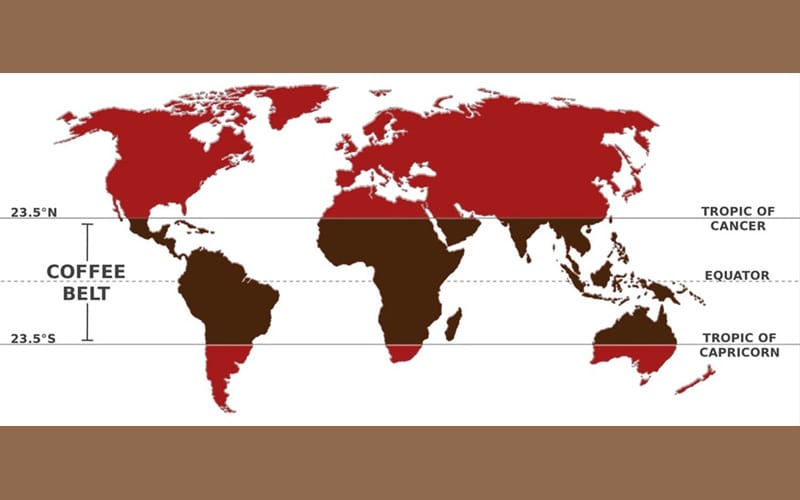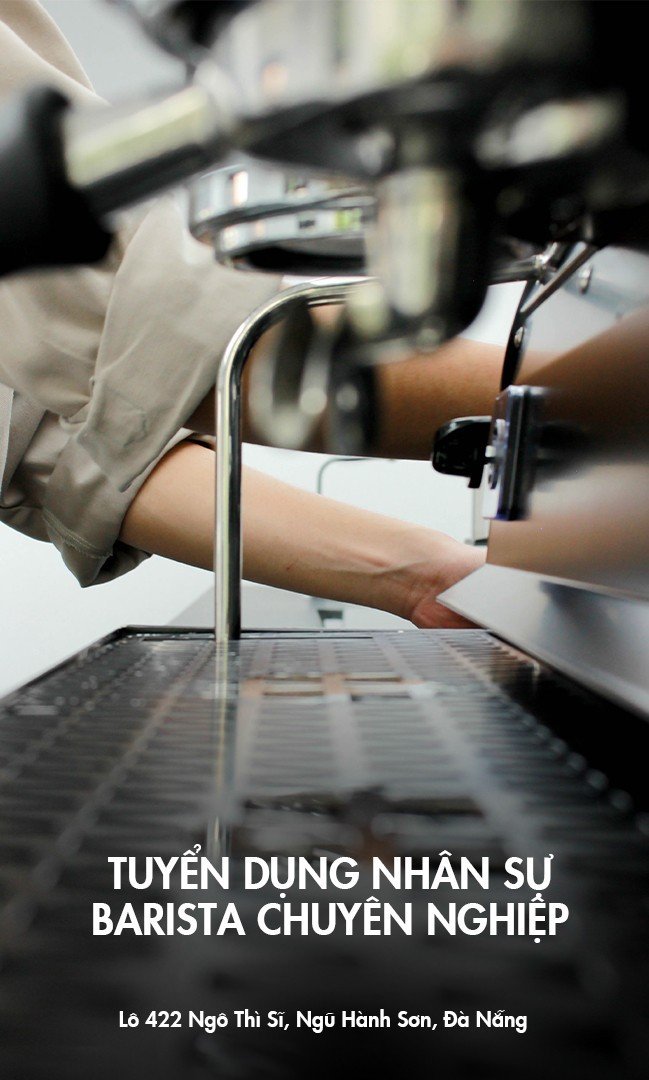Facts about the power of the coffee belt you may not know!
– FIND THE ORIGIN –
Most of the delicious, rare cups of coffee you’ve ever tried come from the coffee belt. Why so? Can regions outside this region produce high-quality coffee? Explore with 43 Factory Coffee through this article!
The coffee belt completely overlaps the tropics
The Coffee belt is an area that includes coffee growing areas in the equatorial regions. Its range extends 25 degrees north and 30 degrees south of the equator, lying snugly between the Tropic of Capricorn and the Tropic of Capricorn and almost completely overlapping the tropics. This region is diverse and rich with long-standing coffee producing countries, stretching across five continents from Central America to Papua New Guinea and Australia in the Pacific. Of these, about 40 out of 70 countries located along this region are recognized as belonging to the coffee belt. Some special coffee belt countries include: South America – Brazil, Colombia, Ecuador, Peru North America – Mexico, Cuba, Guatemala, Nicaragua, Jamaica Africa – Ethiopia, Kenya, Malawi, Zambia, Rwanda , Zimbabwe Asia – Thailand, India, Vietnam, Myanmar, Indonesia Oceania – Australia.

The coffee belt is the origin of coffee
You may have heard information that Ethiopia or Yemen was the first place to produce coffee. However, this is not entirely true. According to a 2021 study in the journal Frontiers in Sustainable Food Systems, it was discovered that Arabica coffee may also originate from South Sudan (North Africa). Due to many years of war and conflict, coffee here only recovered and was exported for the first time in 2015, so this origin is not yet known to many people. But these countries are all in the coffee belt. Therefore, scientists believe that, to be precise, the coffee belt is truly the birthplace of coffee.

Why does coffee grow strongly in the coffee belt?
Coffee plants need specific natural conditions to grow. These factors include fertile soil, mild temperatures, high humidity, and suitable altitude. For example, high quality Arabica coffee often requires mountainous soil, with an altitude of 1,00m – 2,000m above sea level, a balance of humidity, climate and day/night temperature difference. . Some rare and difficult-to-grow types of coffee also require abundant rainfall, high-quality soil, dense shade, fresh climate, no frost, and few pests.

Meanwhile, areas within the coffee belt all possess these ideal conditions. Many areas are favored by specialty coffee varieties with high altitudes, temperatures ranging from 21°C to 29°C and many unique microclimates. Most coffee belt regions share characteristics that clearly distinguish between rainy and dry seasons. This is a good factor for coffee because the rainy season gives farmers the best conditions to grow coffee. Furthermore, some regions of the coffee belt such as Guatemala, Papa New Guinea and Peru also belong to the Pacific Ring of Fire. This is an area with 75% of the world’s volcanoes, providing abundant mineral resources for the development of coffee.

High-value coffee is not outside the coffee belt
According to estimates, the amount of coffee grown on a large scale outside the coffee belt is very small. In fact, coffee enthusiasts grow coffee in many northern and southern climates outside the coffee belt. But growing coffee on the necessary scale to create output and value in this region is relatively difficult. Quality, high-value coffees are almost zero away from this ideal area.
However, experts say that coffee outside the coffee belt will soon reach the “delicious” threshold. The cause may be due to climate change causing areas far from the equator to become warmer. Areas suitable for growing coffee are shifting outside the current coffee belt. But this is a change that few people expect because of its parallel negative consequences.

As the birthplace and nurturer of high-end specialty coffees, the coffee belt contains superior strengths. But now, these areas are being affected by climate change. Coffee producers here are making efforts to transition towards sustainability to minimize environmental impact while improving product quality. If you want to experience these products, visit XLIII Coffee – Brand developed from 43 Factory Coffee Roaster.
Related articles:
– Everything about Laurina coffee – Origin, characteristics, flavor
– Finca La Palestina Gesha #4346 – Affirming the potential of the Cajamarca region, Peru
– Paraxanthine (Px) Coffee – Growth potential in the new generation coffee market share!













